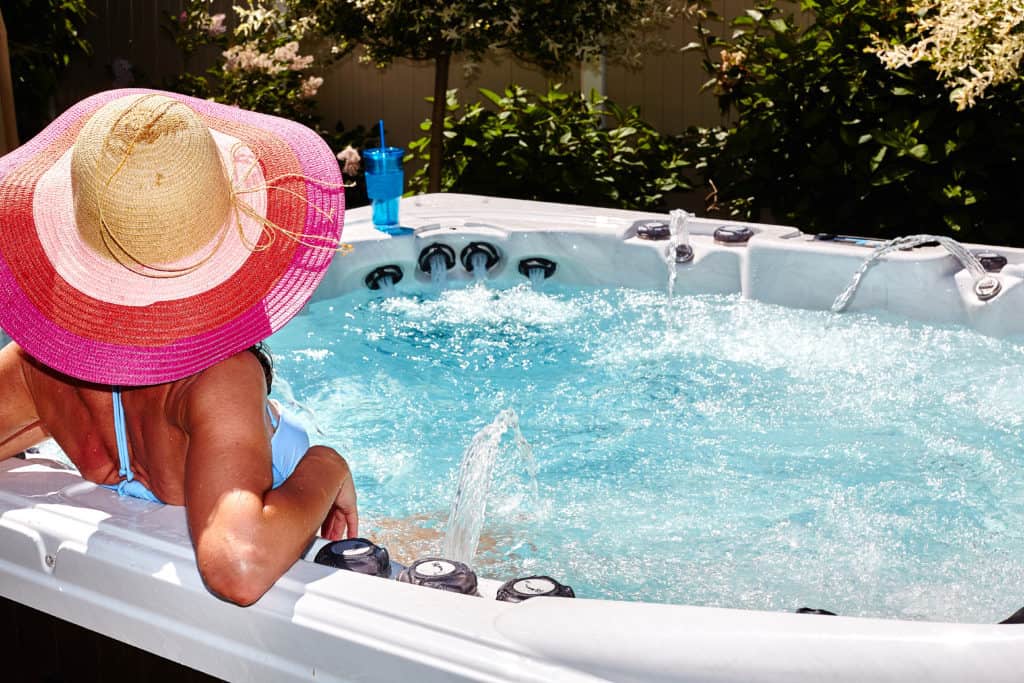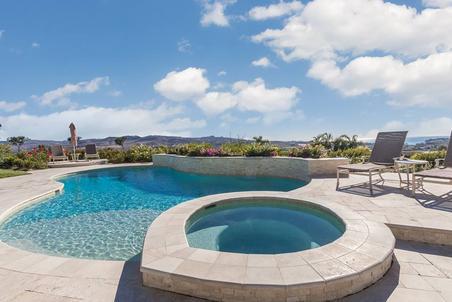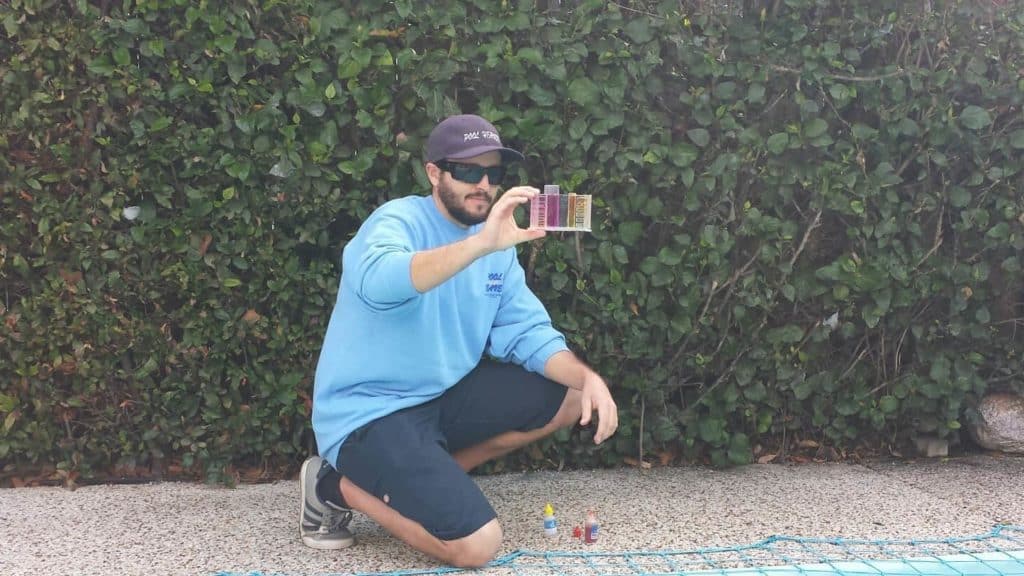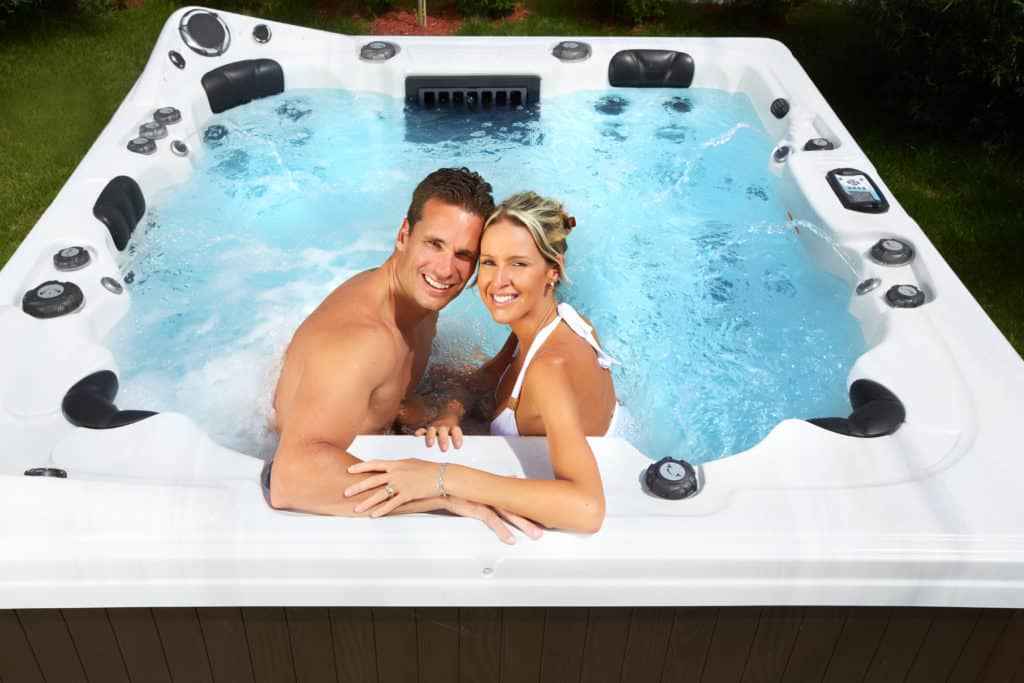Pool Heaven's Pool School
Spa Service
Don’t underestimate the complexity of spa service. Spas and hot tubs are smaller bodies of water with more chemical demand to volume of water with less margin for error. Add too much and you have problems. Add too little and you have other problems. Throw in more body mass to volume of water and you have even more disturbance to spa water chemistry. It is challenging to perfectly balance a moderately used spa with weekly service due to these issues. Even more than swimming pools, expertise of sanitizer chemical affects to the spa water is necessary.

For a spa service contractor, the goal is to hold 2.0 to 4.0 ppm of free, available chlorine or bromine sanitizer for the whole period til the next spa service visit. Due to the small size of a spa, it would take far too much instant sanitizer to last a week. This is why we use small chlorine or bromine tabs for most home spa service. We prefer chlorine, because it is a better, stronger santizer, but we do have some spa owners who request bromine. The benefit of tabs is they dissolve slower withour over saturating the spa water with sanitizer. Now that we know this is delicate, our goals are very similiar to swimming pool water chemistry.
This is a great time to mention that you should hire an expert in spa service if you are not one yourself for your own spa service.
IDEAL SPA SERVICE WATER CHEMISTRY
Free, available chlorine 2.0 ppm to 4.0 ppm
pH 7.2 to 7.8
Carbonate alkalinity 80 ppm to 120 ppm
Conditioner 50ppm to 80ppm
Our main challenge is that chlorine tabs contain conditioner which means that we are constantly adding conditioner with our chlorine tabs to the spa water. Over time our spa water will need to be drained and replaced due to the high cyanuric alkalinity that forms when conditioner elevates over 50 ppm to 80 ppm. Other than adding instant liquid chlorine on a daily basis or using a salt system/instant feeding system, there is no real way to fight this phenomenon. We recommend draining spas every 3 to 6 months.
There are other reasons for the need to replace spa water as well. For instance, there is more body volume to volume of water compared to swimming pools. This means organic materials from body fluids, skin, and hair will dissolve in the spa water. Replacing spa water regularly is a major step in maintaining safe spa water!

Need A Pool or Spa Industry Professional in the Orange County, Ca. Area?
Send us your contact info., city where project is located, and exact service or repair in need. We will quickly have our industry pro who we use and trust for our over 500 customers contact you with more information and guidance.
Type in any topic to search through our pool school for informative articles and webpages. Scroll through our menus and blog posts for any topics of interest.
Now that we know how delicate spa service is, let’s look at balancing pH and alkalinity. Chlorine and bromine tabs will lower the spa water pH , so you must be proactive. Chlorine and bromine are a little different with their affects on spa water chemistry, but we are going to focus on chlorine, because that is our go to sanitizer. Remember we are dealing with a small body of water and chemicals go a long way. Expertise in spa water chemistry is mandatory.
If we measure a low pH and/or low alkalinity, we have to spike them up especially considering that we are adding more chlorine tabs for the next week that will lower pH. To raise the pH, we use a product called soda ash or sodium carbonate. To raise the alkalinity, we use a product called Alkalinity up or sodium bicarbonate. Very rarely if ever will you have to add acid to your spa to lower pH or alkalinity as it is the product of choice to lower both.

Proper Measuring is Everything with Spa Service

We will add soda ash to spa water when the pH is low and we will add Alkalinity up when the alkalinity is low. For instance, if we were to measure a 7.2 pH with an alkalinity of 100 ppm, we would add a little bit of soda ash to spike up the ph. Soda ash will raise the alkalinity a little bit as well, but it raises pH more. We would add alkalinity up if we measured an alkalinity of 60 ppm and a pH of 7.6. Alkalinity up will also raise the pH a bit, but it will spike up alkalinity more. If they are both low or under, we may add both. Remember our ultimate goal is to add whatever it takes to measure ideal water chemistry levels the following spa service visit the following week.
We also like to add 2 drops of the green cap (in most test kits and #4 in picture to right), chlorine neutralizer solution when testing total alkalinity as spa water tends to run higher in free, available chlorine or bromine. We have noticed weird results in color of test water when using just one drop of the green cap solution.
Due to big fluctuations of chemical demand from random use or non-use, sanitizer spiking may be needed. We usually use Di-chlor which may also be referred to as granular chlorine. This product contains conditioner in it as well, but dissolves instantly. It is advantageous, because it is easier to measure, store, and mix with the spa water. Liquid chlorine can create a weird chemical effect when added to a chlorine tablet fed spa. The water can turn greenish and cloudy, so be careful adding liquid chlorine. Like I have been repeating, spa water is delicate and needs to be balanced.

